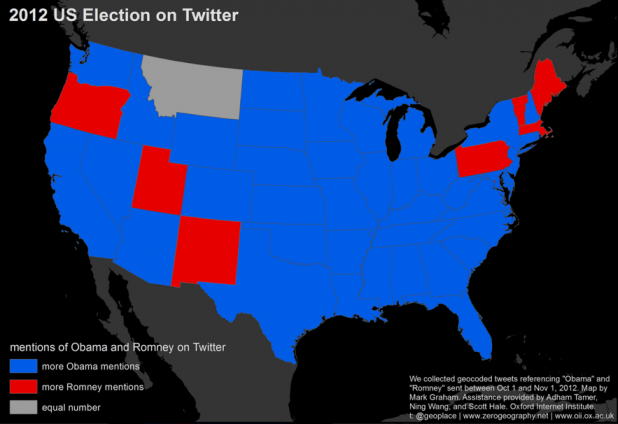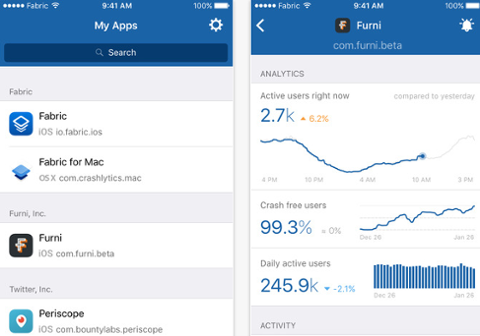Forget Nate Silver and the other statisticians’ complex formulas for predicting today’s U.S. presidential election; disregard the hallucinating Peruvian shamans who claim they already know whether Obama or Romney takes the big prize (Silver apparently has nothing on Peru’s indigenous hill-gods); don’t bother staying awake for the results to appear on CNN or Fox News. Obama’s the winner—if one relies on Twitter mentions in place of actual votes. Mark Graham, a research fellow at the Oxford Internet Institute, enlisted a small team to help him with a little Election Day experiment: collect 30 million geocoded Tweets over the month of October, isolate mentions of candidates Obama and Romney, and then visualize all that data on a map of the United States. (Hat tip to The Guardian and The Huffington Post for pointing out Graham’s work.) “We see that if the election were decided purely based on Twitter mentions, then Obama would be re-elected,” Graham wrote in a Nov. 5 blog posting. “In fact, the only states that Romney would win are Maine, Massachusetts, New Mexico, Oregon, Pennsylvania, Utah, and Vermont. Romney also wins in the District of Colombia (we unfortunately didn't collect data on Alaska or Hawaii).” A total of 132,771 tweets mentioned Obama, versus 120,637 for Romney. That translates into a “popular vote” total for Obama of 52.4 percent, with 47.6 percent for Romney. While that’s within the same ballpark as actual opinion polls, Graham admits that his Twitter experiment neglects one crucial detail: sentiment analysis. “We would need to employ sentiment analysis or manually read a large number of the election-related tweets in order to figure out whether we are seeing messages of support or more critical posts,” he wrote. Moreover, the Twitter analysis has Obama winning states he’s unlikely to carry in real life, including Texas and much of the Deep South; in a similar vein, Romney is unlikely to actually win Oregon or some of the other states that end up in his column on the Twitter map. Nonetheless, Graham sticks by his data as an interesting experiment: “While this work may seem like a contemporary attempt at soothsaying, the data will also serve as a useful benchmark in order to allow us to see what social media data shadows actually might reflect.” Until the results roll in tonight, settling the matter once and for all, analysts will continue to make their best predictions based on the algorithmic tea leaves. Those interested in another take on social-data predictions can head over to Crowdwire, a project of Bluefin Labs that’s providing a “Live Social Media Exit Poll.” Image: Zerogeography.net


